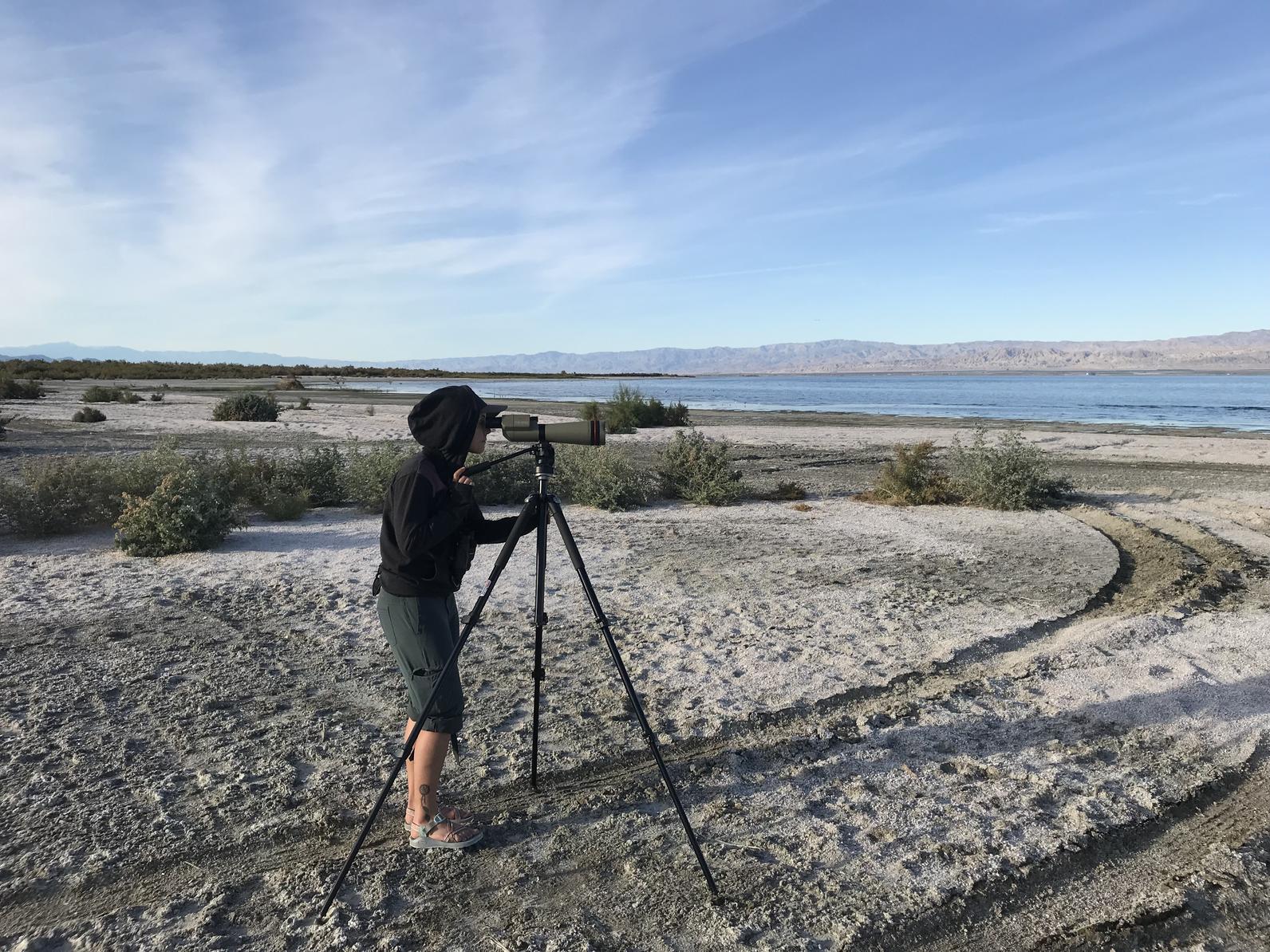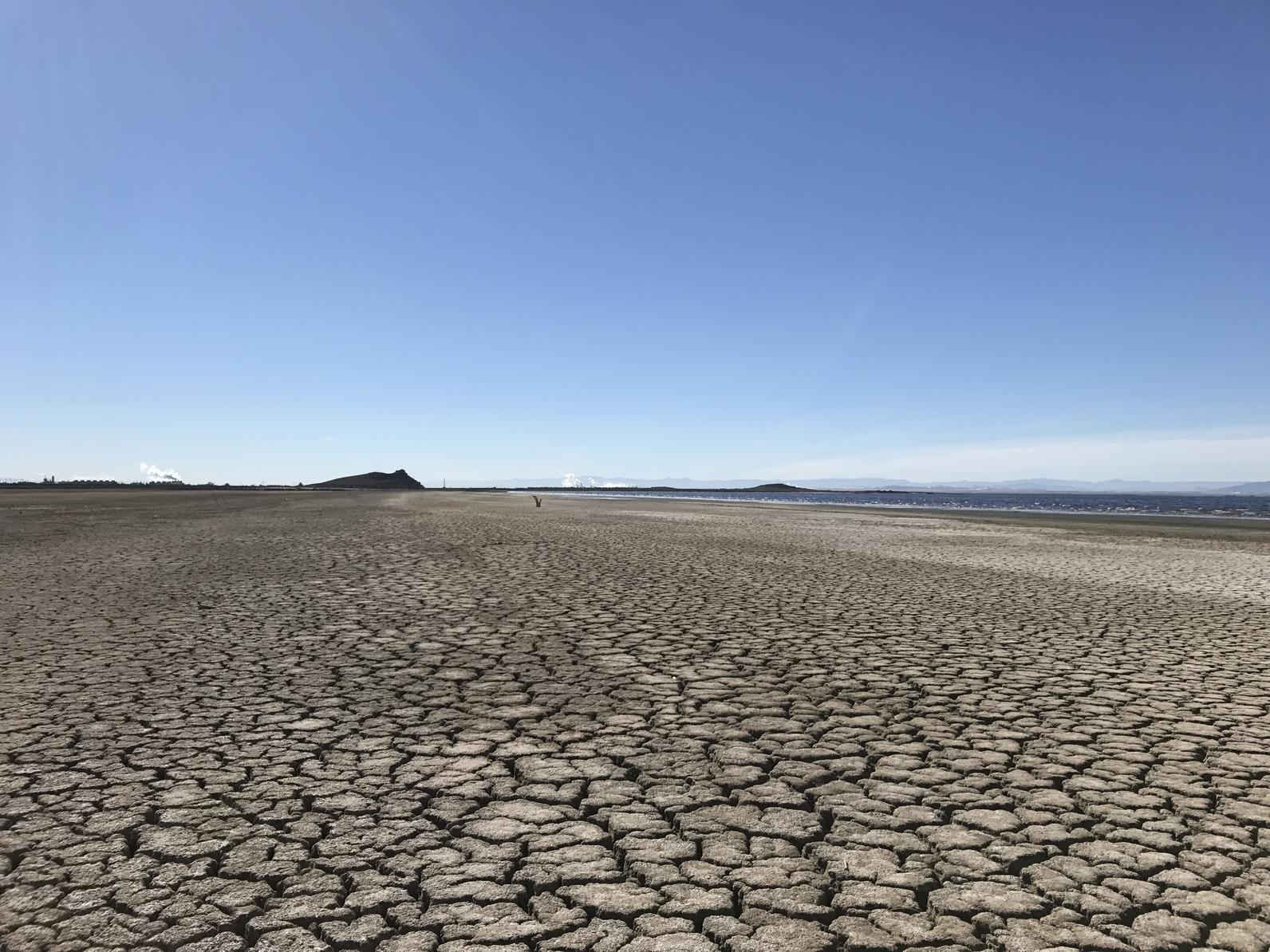
I’m officially confused.
Earlier this month, on March 11, I completed another round of bi-monthly waterbird counts from fourteen points along the shoreline of the Salton Sea, and tallied my second-highest number of individuals since Audubon California started the study in November 2016. I found more than 17,000 birds, including counts in excess of 4,000 for two species, Northern Shoveler and Ruddy Duck. These two species are always common here in winter, but other waterfowl found included more than 100 American Wigeon on the Sea (I found virtually none on counts in 2017), and 100+ Gadwall, both species that tend to be found in fresh water, not salt water. And the Sea is definitely getting saltier. It was believed to have recently crossed the 60 PPT salt threshold – above which tilapia, the only fish left in the sea – are said to stop reproducing.
In fact, fish-eating birds have largely abandoned the sea. I recorded just two individual American White Pelican within my 1 km x 1 km survey blocks (a handful were seen just outside the box on a couple points, though nothing like the thousands or even hundreds that once occurred here all winter and into spring). Ditto for Double-crested Cormorants (2 birds), Brown Pelican (zero), herons and egrets, and even Eared Grebe (2 birds), which early research showed fed on pile worms at the sea, rather than small fish.

So what’s been doing well? So far, American Avocet and Black-necked are still thriving, found in triple digits on my count (which covers just a fraction of the shoreline, but is nonetheless probably representative of the Sea overall). Shorebirds like Western and Least sandpipers, which both winter and stopover at the sea en route to Arctic nesting grounds were also seen in good numbers, with at least 2000 counted. Bonaparte’s Gulls wintered on the sea by the hundreds this past year, and I found nearly 400 still here in mid-March. Other gulls, such as California, Ring-billed, and Herring, are also still flocking to the sea, with several thousand massing at the mouth of Salt Creek along the eastern shore the afternoon of my count.
It’s too early to say whether or not we are detecting real trends at the Salton Sea. In some ways, the Sea has been in a constant source of change for decades, in others some of the changes are happening too rapidly, are permanent, and detrimental for the birds that have come to rely on them. There has not been consistent monitoring of the fish populations at the lake, much less invertebrates like pile worms. However, California Department of Fish and Wildlife and U.S. Fish & Wildlife Service have recently started fish and invertebrate surveys, so hopefully we can learn more about what is happening to these food resources for birds. Maybe the crash for waterfowl and – could it be? – gulls is just around the corner. I’m not sure.
The sea continues to surprise.
By Daniel S. Cooper
Monthly Giving
Our monthly giving program offers the peace of mind that you’re doing your part every day.




